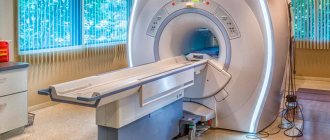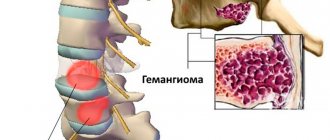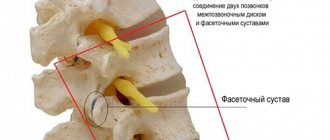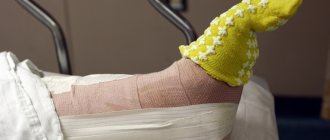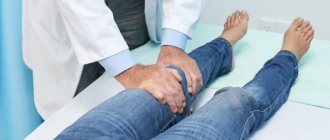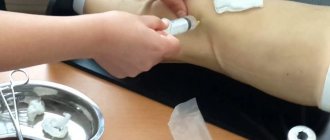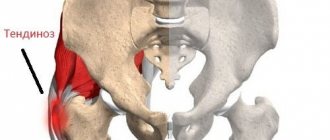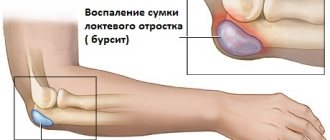Surgery to remove a spinal cyst is considered the only effective method of treatment in advanced stages of the disease when it comes to periarticular synovial cyst
intervertebral facet joint. Typically, this condition is accompanied by pain in the arm or leg, sometimes with numbness. In some medical cases, the pain can be so unbearable that the patient may require emergency spinal surgery.
Cyst of intervertebral (facet) joints
- a benign formation in the cavity of which fluid accumulates. Over time, it increases in size and causes severe pain. Experts classify spinal cysts as rare pathologies, but recommend not to let the disease progress and to promptly seek help from neurosurgeons if symptoms are present.
Symptoms of a spinal cyst
Depending on the location, spinal cysts can be divided into:
- Cysts in the cervical spine;
- Cysts in the thoracic spine;
- Cysts in the lumbar spine;
- Cysts in the lumbosacral spine;
- Cysts in the sacral spine.
According to the nature of education, experts distinguish the following types:
- Perineural cyst of the spine (usually an incidental finding and does not require treatment)
- Paraarticular cyst (paraarticular synovial cyst of the intervertebral facet joint, requires spinal surgery)
- Arachnoid cyst (extremely rare)
As experts note, there are dozens of types of spinal cysts, most of which are considered normal
.
Surgical treatment is indicated for paraarticular synovial cyst of the intervertebral facet joint if radicular compression symptoms are observed.
In practice, this means that the patient suffers from regular pain in the area where the cyst is located in the spine and in the limbs. Often the discomfort is accompanied by numbness in the arm or leg. If the pain becomes unbearable, emergency surgery is recommended.
Diagnostics
Diagnosis of cysts is aimed primarily at their differentiation from other space-occupying formations of the spine - benign and malignant tumors, herniated intervertebral discs. Additional examination methods can resolve these issues, as well as assess the prospects for conservative and surgical treatment. Based on the results of a neurological examination, the following is prescribed:
- magnetic resonance imaging;
- computed tomography;
- ultrasonography;
- radioisotope scanning (scintigraphy);
- myelography - x-ray examination with subarachnoid injection of a contrast agent into the spinal canal;
- biopsy – in diagnostically difficult cases in order to obtain material for cytological and histological examination.
Surgeries for spinal cysts
As already mentioned, most often surgical intervention is indicated for paraarticular synovial cyst of the intervertebral facet joint. Many patients consider laser removal of spinal cysts to be the most effective method, but neurosurgeons deny the effectiveness of such an operation. When removing a spinal cyst with a laser, the heat wave negatively affects the spinal discs, destroying them. Therefore, it has already been experimentally proven that the method of removing spinal cysts with a laser is noticeably outdated.
Literature and sources
- Movshovich I.A., Illarionov V.P., Mattis E.R., Mitbrait I.M., Nikityuk B.A., Tager I.L., Freidin L.M., Tsivyan Ya.L. Spine // Great Medical Encyclopedia: 30 volumes / chapter. ed. B.V. Petrovsky. — 3rd ed. - Moscow: Soviet Encyclopedia, 1983
- Krylova N.V., Iskrenko I.A. Anatomy of the skeleton. Human anatomy in diagrams and drawings. Atlas manual. - M.: Publishing house of the Russian Peoples' Friendship University, 2005.
- Human anatomy. In two volumes / Ed. M. R. Sapina. — 5th ed., revised. and additional - M.: Medicine, 2001.
Video on the topic:
Why is it worth having surgery to remove a spinal cyst at the Pirogov Clinic?
- Neurosurgeons of the highest category, with more than 10 years of experience, with a scientific degree in medicine. Sci.
- Modern equipment in operating rooms.
- Affordable prices for spinal cyst removal.
- Positive reviews about spinal surgeries and treatment in our clinic. You can view them on our website, as well as on independent platforms, for example Napopravka.ru.
- Hotel-type rooms.
- You can get a recommendation from a neurosurgeon for the treatment of your disease completely free of charge. You can submit MRI images on this page of the website.
- Possibility of obtaining an installment plan or a loan for treatment.
- Service under VHI policies.
Make an appointment
Treatment methods
Asymptomatic, accidentally discovered cysts do not need to be treated, but their dynamic monitoring is necessary.
Urgent surgery is indicated for:
- compression of the roots of the cauda equina with lower paraparesis (weakness in the legs);
- sensory disorders in the anogenital zone;
- functional pelvic disorders.
In other cases, treatment of spinal cysts begins with conservative measures. Of course, they do not eliminate cysts, but they often help to significantly reduce their clinical manifestations. Prescribed:
- short-term bed rest;
- non-steroidal and steroidal anti-inflammatory drugs;
- vasoactive agents;
- diuretics;
- physiotherapy;
- epidural administration of corticosteroid hormones;
- some manual therapy techniques;
- reflexology;
- Exercise therapy.
If there is no effect from conservative treatment within 4-6 months, especially if the cyst is larger than 1.5 cm, surgical treatment is indicated. If it is contraindicated, stereotactic radiotherapy is performed. Precise focusing of beam energy allows the cyst to be affected without damaging the spinal cord tissue. This contributes to the desolation and scarring of the pathological cavity.
In modern neurosurgical centers, minimally invasive interventions are performed for cysts using endoscopic, microsurgical techniques, laser and cryosurgical technologies. According to indications, lightweight, durable, fully biocompatible implants made of polymeric materials and alloys are used to ensure maximum and long-term preservation of spinal functions.
To eliminate spinal cysts and release nerve structures from compression, the following is carried out:
- percutaneous cyst aspiration. Under the control of neuronavigation, the cyst is punctured and fluid is sucked out of it. To reduce the risk of relapse, drugs are injected into it to promote gluing of its walls and obliteration (emptying) of the cavity;
- Radical excision of the cyst is a more reliable way to prevent future relapse. The neuronavigation system allows you to make a short, no more than 3 cm, incision to access the cyst exactly in the area of its projection. Next, the muscles and ligaments on the way to it are moved apart and gently fixed. The work uses an operating microscope with 8x magnification to ensure removal of all components of the cyst and preservation of healthy structures.
Treatment of Tarlov arachnoid cyst at the level of the S2 vertebra
Treatment of Tarlov arachnoid cyst at the level of the S2 vertebra has most of the analogies with the treatment of perineural cyst. If the Arachnoid cyst is small in size, then there is hope that it will resolve without the influence of drugs.
But for this you need:
- Constantly monitor your condition with a neurologist;
- Undergo periodic preventive examinations;
- Eat right and engage in preventive sports;
- Make sure that the load on the spine is gentle.
But, if the cyst begins to create uncomfortable conditions and directly threaten well-being, it is necessary to move on to drug treatment. The doctor will prescribe painkillers and anti-inflammatory medications, as well as vitamins A and E.
When drug treatment is not successful, surgery is used. The operation is performed under constant computer control and local anesthesia. To remove the cyst, aspiration is used. To do this, a needle is inserted into the cyst and its contents are sucked out.
The result of this intervention is the rapid disappearance of pain. A significant reduction in the number of medications taken can also be considered a plus.
Complications and consequences
If the process is severe, the following complications may develop:
- relapse
- coccyx osteomyelitis (purulent bone lesion)
- fistulous pyoderma (purulent skin lesion)
- fungal infection
- multiple communicating purulent fistulas and pathological tracts with epithelial lining (sacrococcygeal region, perineum, scrotum, inguinal folds, anterior abdominal wall, anus)
Complications require painstaking, lengthy, often multi-stage treatment. Competent prevention, the right choice of clinic and doctor, timely treatment, radical surgery, and compliance with all recommendations will help you avoid such problems.
Causes of the disease
The most common causes of cysts on the spine are:
- Inflammatory processes in the back;
- Back injuries;
- Excessive physical activity;
- Sedentary lifestyle, sedentary work;
- Spinal hemorrhage;
- Congenital disorders of the spine;
- Parasitic infections of various types.
Sometimes a combination of several reasons can cause a cyst to appear, so to establish an accurate diagnosis and find out a more detailed clinical picture, you should consult a specialist.
Consequences
If the neoplasm is characterized by increased activity (its growth and, accordingly, the increase in cerebrospinal fluid or hemorrhagic fluid puts pressure on nearby tissues), then this threatens the development of pathological processes in the nerve endings . Constant pressure damages the spinal nerve roots, which ultimately leads to disruption (or complete loss) of sensitivity in the limbs and skin. Cramps and numbness appear.
Untimely treatment can also lead to deformation of intervertebral discs , which in turn can cause the development of scoliosis, osteochondrosis, kyphosis and other degenerative diseases of the spine.
In addition, a spinal cyst can cause inflammation and purulent abscesses , which can cause an abscess or sepsis. This can be fatal in just a few hours, so you need to treat the cyst as early as possible to avoid complications or irreparable consequences.
With timely treatment, the chance of stopping the growth of the cyst is very high. Of course, with conservative treatment it is impossible to completely get rid of the cyst, but you can stop its growth and get rid of the symptoms.
Video: “Types and causes of neck cysts”
Consultation with a proctologist
Pathology in the form of the epithelial coccygeal tract occurs only in men. The frequency of diagnosis of this disease is quite high - 1 case per 300-400 boys born. At a younger age, a pilonidal cyst may not cause inconvenience and may not manifest itself in any way. However, from the onset of puberty and beyond, it is difficult to ignore the disease.
At the appointment, the proctologist diagnoses an uncomplicated epithelial coccygeal tract during a visual examination; a symptom confirming the pathology is holes in the fold between the buttocks. If, along with this, local inflammation is detected and fistula tracts are noticeable, the proctologist can diagnose a complicated pilonidal cyst. Also during the consultation, the proctologist performs a digital examination aimed at excluding other pathologies. In particular, it is necessary to ensure that there are no changes in the area of the Morganian crypts - anatomical depressions in the terminal segment of the rectum, as well as in the area of the coccygeal and sacral vertebrae.
Delicate and complex problem
Coccyx cyst (epithelial coccygeal duct) is one of the most delicate and complex health problems.
Those who have dealt with her understand what we are talking about. Coccyx cyst occurs in both men and women. According to statistics, the stronger sex suffers three times more often. The delicacy lies in the localization of the pathological focus. The formation is located in a fairly intimate place (the area of the coccyx, sacrum and intergluteal fold) not far from the anus. Not everyone will easily want to share this with others, even with relatives and loved ones. Not everyone is ready to immediately show the sore spot, discuss their complaints and discomfort, even with doctors. When an epithelial cyst of the coccyx becomes complicated (abscess formation, suppuration, relapse), a person in most cases is deprived of the opportunity to maintain his usual lifestyle and quality of life. Irritating pain, excruciating discomfort, serous or purulent discharge, an unpleasant odor appear, laundry gets dirty, and additional hygiene procedures become necessary. Often it is simply impossible to sit normally. And this is not the whole list of inconveniences.
Many in this situation are forced to give up their usual activities, sports, and even intimate life. All this is depressing. Adding to the delicacy is that a coccyx cyst clinically manifests itself more often in adolescence or puberty. Teenagers are known to be especially sensitive to such problems, although they will try their best not to show it. Wise advice, understanding, help and timely consultation from a surgeon are especially important for them.
The complexity of this pathology lies in the fact that very often there are relapses (repeats) after improper preparation for surgery, an insufficiently radical operation (incomplete removal of cysts, fistulas and leaks), inattentive management in the postoperative period, failure to follow doctor’s recommendations, ignoring basic hygienic procedures and other reasons. Some people have to undergo surgery for coccyx cysts not once, not twice, but multiple times. You won’t believe it, but there are still people who suffer all their lives due to relapses. This reduces the quality of life and is certainly a tragedy. It shouldn't be like this!!!
It is necessary to initially take this disease and the initial operation very seriously. Agree, no one wants to have multiple surgeries. However, repeated surgical intervention should be taken no less seriously, and perhaps more seriously, if the clinical situation has recurred. It is very important to prevent chronicity and continuation of the sluggish process. A coccyx cyst is not a very common and not at all an ordinary problem. The choice of clinic and doctor is extremely important to minimize the risk of relapse. Consultation and surgery with a qualified surgeon who has experience in treating this pathology is necessary.
Inflammation of the epithelial coccygeal duct
When the openings of the epithelial coccygeal duct are blocked or mechanically traumatized, inflammation occurs, which involves fatty tissue. An abscess is formed - an abscess that often breaks through the skin on its own. Despite the fact that after a breakthrough, the symptoms are smoothed out and health improves, independent breakthroughs are dangerous due to the formation of a fistula - a narrow channel through which pus from the area of inflammation will come out (the external opening of a purulent fistula is formed in the area of the abscess breakthrough). A fistula with an inflamed epithelial coccygeal passage is not associated with the rectum!


